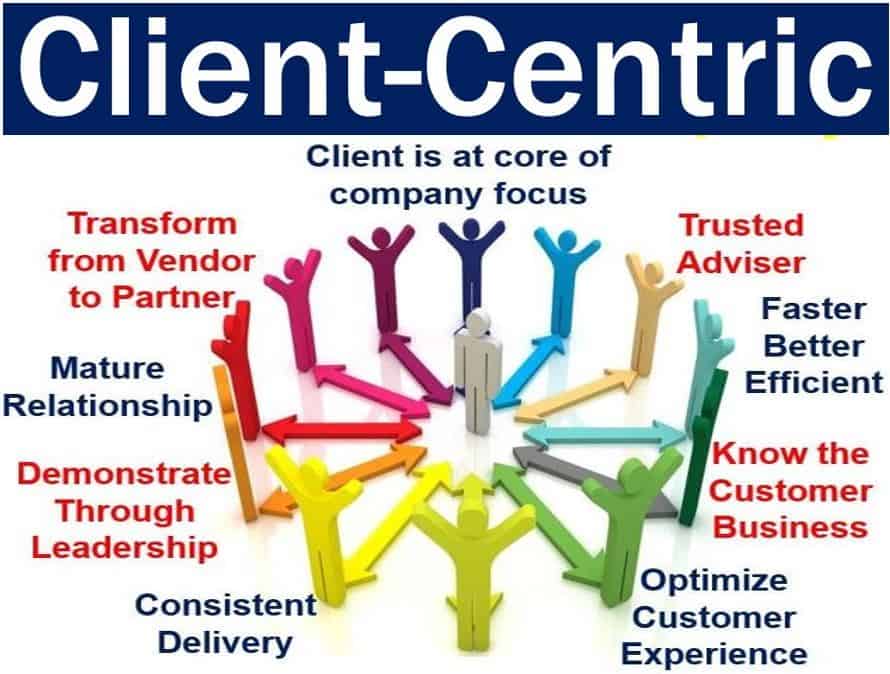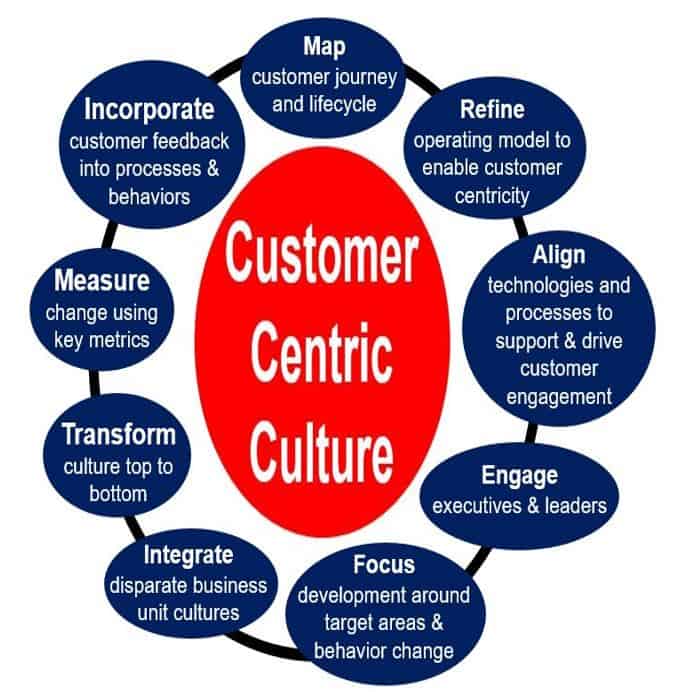Client-Centric refers to a method of doing business. With client-centric companies, the client is at the center of their efforts. In other words, the companies focus on the client more than their products or sales. In this article, you will see two terms – client-centric and customer-centric. They both have the same meaning.
However, when we use the words ‘client’ and ‘customer’ on their own, they do not have the same meaning. A client typically has an arrangement with the provider while a customer does not. There are exceptions. Also, some professions only have clients, such as lawyers, accountants, and psychologists.
Focusing on the client
Businesses that use a client-centric approach focus on the client rather than sales. They try to gain a larger share of a customer’s ‘wallet.’
In other words, they try to get the client to spend more. They do this by offering a range of goods and services.
A customer-centric business tries to provide a positive experience for the client. The positive experience relates to both before and after the sale.
The aim is to encourage repeat business, customer loyalty, and ultimately profits.

Companies that focus on the client or customer are more likely to have a help desk. Help desks provide support for users of, for example, computers, software, and hi-tech devices.
Online client-centric businesses
The online retail giant Amazon.com is a prime example of a client-centric business. It has spent years building up a culture around customers and their needs.
Zappos.com is an online shoe and clothing store. The company is so client-centric that it will fire employees if they do not fit. In other words, if they do not fit in its customer-centric culture.
Not a new approach
Most online businesses today have the client at the center of their core focus. Client-centricity is not a new approach to business.
However, we now use it increasingly in the context of client experience (management) and corporate ‘customer culture.’ We also use it in the context of digital marketing and the customer life-cycle.

The saying ‘hire for the attitude and train the skill’ works slightly differently in a customer-centric company. Even if employees have the right attitude, they might not fit into your company’s culture. When hiring, look beyond the attitude to the personality. Above all, you must make sure there is a cultural fit. (Data Source: linkedin.com/pulse/marketing-strategy)
Customer relationship management
When the client is at the core, the company collects a wealth of data within its CRM system. CRM stands for customer relationship management. Subsequently, the company has a full 360° view of that client. It then uses that knowledge to enhance the customer experience.
You can, for example:
- Use client data to understand purchasing behavior, engagement, and interests.
- Identify opportunities to create products and services for your best clients.
- Use client lifetime value to segment them according to how much they spend.
Client-centric strategies often lead to higher customer satisfaction rates, which in turn can significantly improve client retention and referral rates
According to a Deloitte and Touche study, client-centric businesses are sixty-percent more profitable than other companies.
